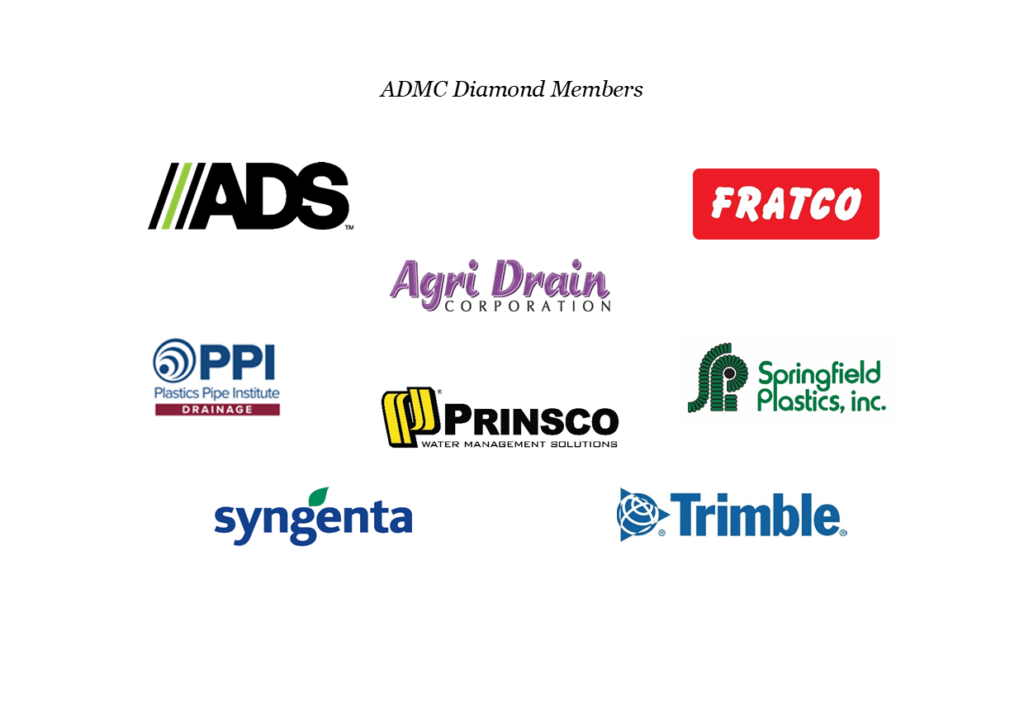ADMC Welcomes New Members
AMDC welcomes in and thanks the Drain Tile Safety Coalition and Hands On Tiling & Excavating LLC as new members in the Spring of 2022. ADMC members may recognize the DTCS as they had a strong presence at the winter LICA meetings. ADMC looks forward to the partnership that is aimed at reducing accidents during tile installations. The DTSC has a powerful video on the importance of locating utility lines and ADMC will be assisting in spreading their safety information.

Hands On Excavating, located in Radcliffe, IA, are joining as Silver members. Co-founder Jacob Handsaker has been very active in incorporating conservation drainage systems into their business model. Hands On Excavating successfully installed the 51 saturated buffers and bioreactors in the summer of 2021 for the Polk County Project. This was a big step in showing that these practices can be delivered at scale. Hands On Tiling and Excavating likely installed more linear feet of saturated buffer in Polk County, IA than what has been installed nationally through EQIP in the past 5 years.

Conservation Drainage Network 2022 Annual Meeting
ADMC served as the host for the Conservation Drainage Network 2022 Annual Meeting in Fort Wayne, IN from April 6 – 8. CDN is a national partnership with the goal of improving drainage practices to meet future demands of crop production. Keegan represents the drainage industry on the CDN Organizing committee and serves as the Vice Chair. The annual meeting had 51 in person participants, 63 online participants, and 30 people on the field trip within the Western Lake Erie Basin.
The meeting included presentations regarding agency and industry updates, state drainage reports from NCERA-217 members, a phosphorus mini-symposium, emerging solutions to drainage ditch systems, drainage research, and had a closing session organized by ADMC members ESE and ADMC chairman of the board Charlie Schafer on accelerating adoption of conservation drainage practices. Available presentations are posted as PDFs on the CDN 2022 Annual Meeting Page.

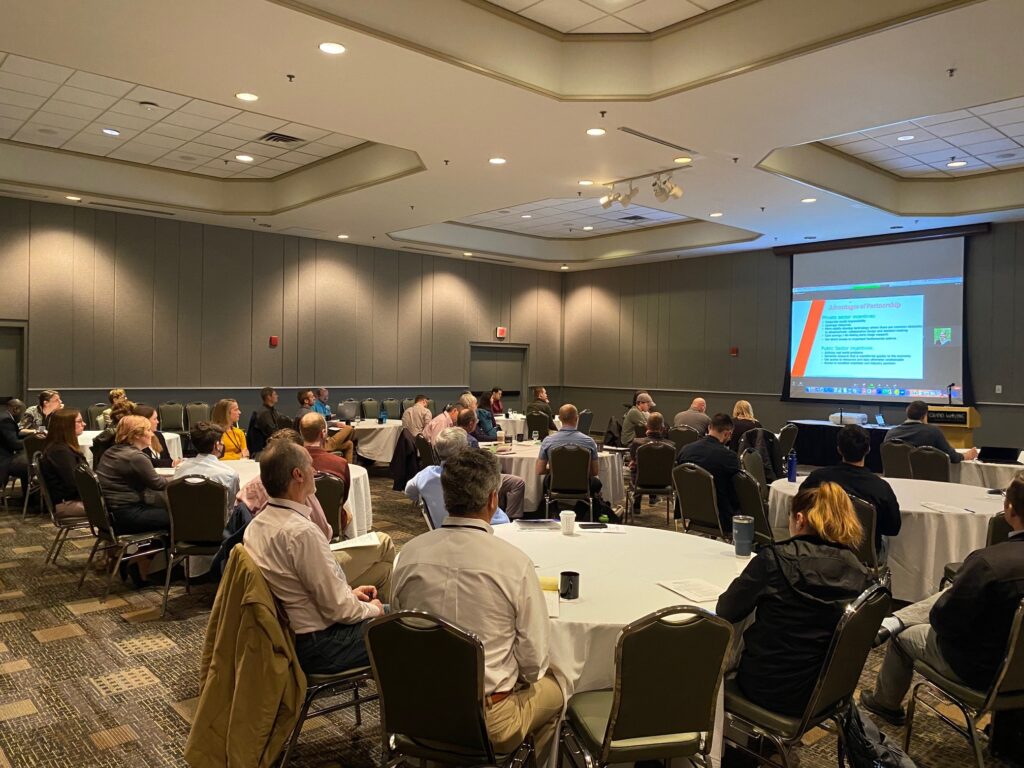

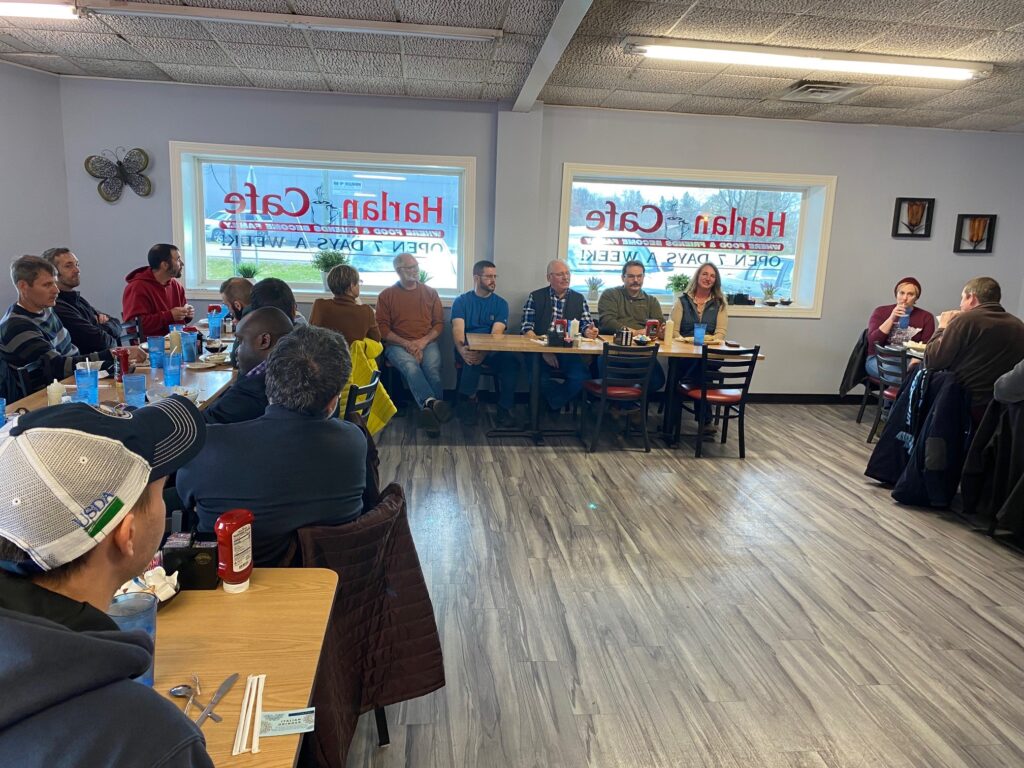
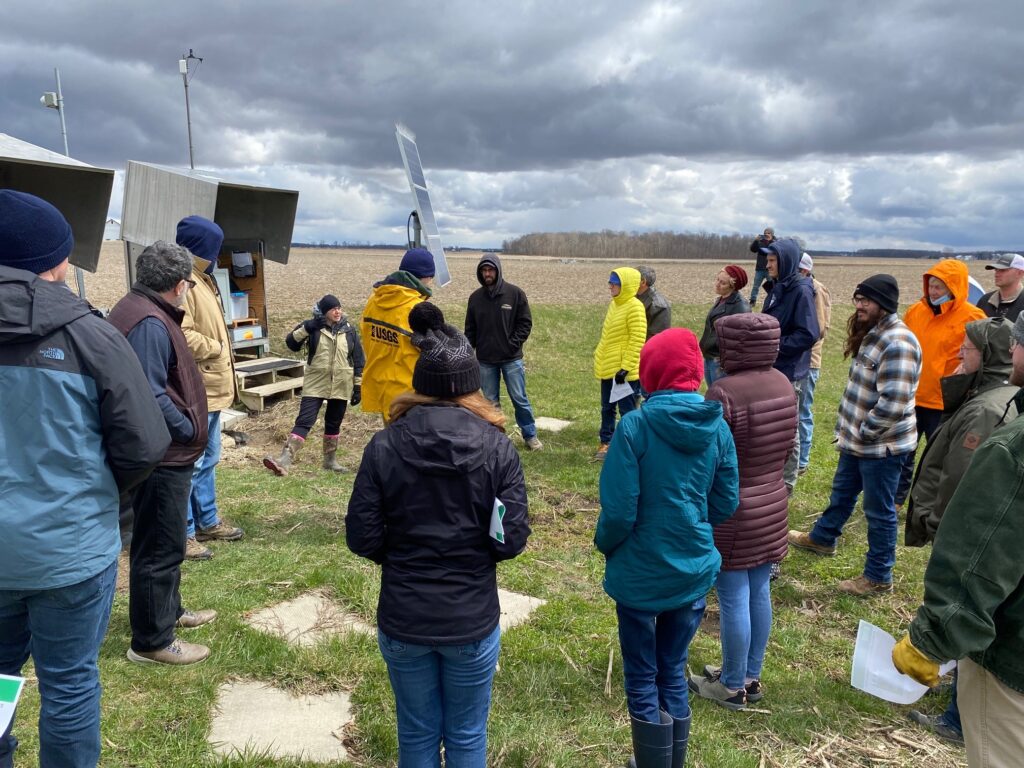
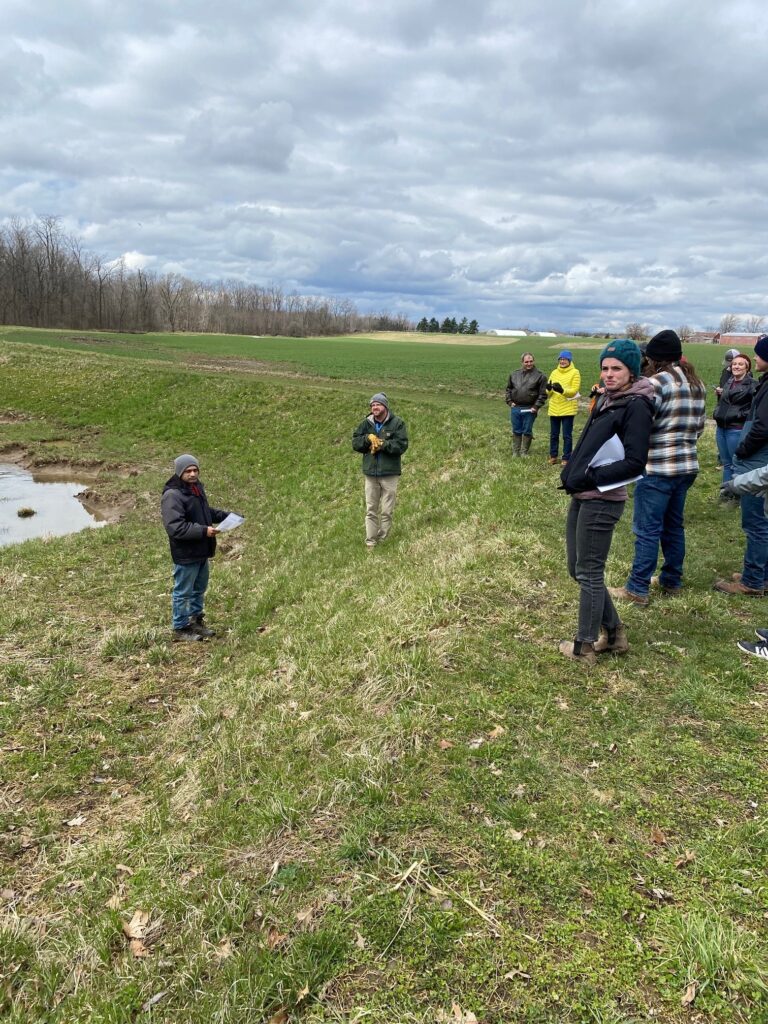
LICA Contractors are Encouraged to Recruit Conservation Drainage Practice Sites through the Iowa Systems Approach to Conservation Drainage Project
The Agricultural Drainage Management Coalition (ADMC) is contracting with the Iowa Agricultural Water Alliance to deliver structural conservation drainage practices that are part of the Natural Resource Conservation Service (NRCS) funded Iowa Systems Approach to Conservation Drainage (ISACD) project. The Iowa Department of Agriculture and Land Stewardship (IDALS) is the lead partner of the ISACD Regional Conservation Partnership Program (RCPP) project and will also be contributing funding towards practice installation. ADMC presented an overview of the project at the recent LICA regional meetings in Cedar Rapids and Des Moines. LICA contractors can ADMC as a consultant on site saturated buffers, bioreactors, or drainage water management practices and assist their customers through the sign-up process.
The ISACD is intended to demonstrate a systems approach to conservation to improve farmer profitability and sustainability. The project is limited to the Des Moines Lobe and Iowan Surface (Figure 1), but IDALS can likely fund projects outside of this area if there are applicable sites.
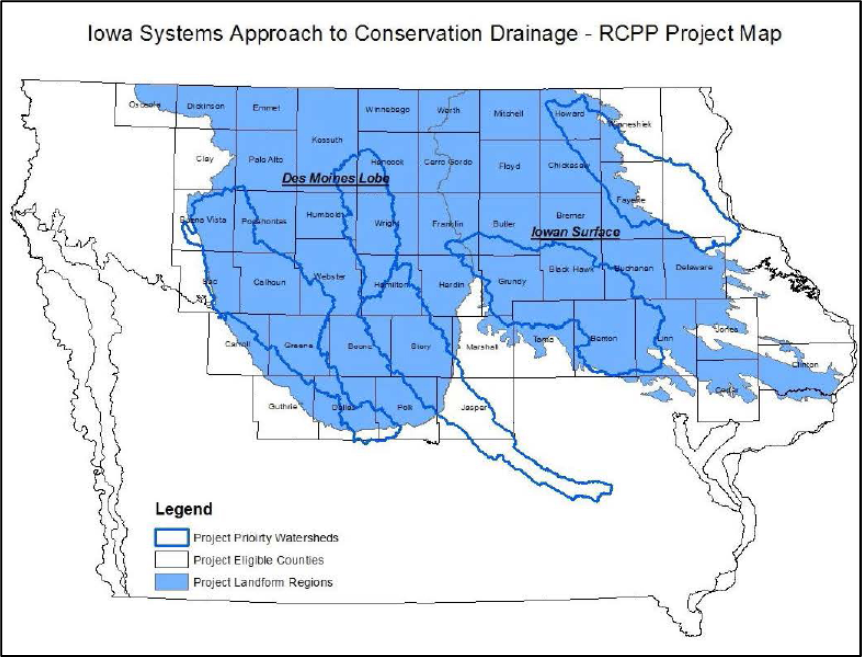
Figure 1 Iowa Systems Approach to Conservation Drainage Priority Areas.
Eligible practices include constructed wetlands, cover crops, drainage water management, drainage water management plan, denitrifying bioreactors, grassed waterways, residue and tillage management/no till, saturated buffers, and oxbows. ADMC encourages contractors to speak to customers and determine interest levels. To make the practices more economical, for both design and installation purposes, farmers are encouraged to install sites on multiple outlets as conditions warrant. Grouping 5-10 sites together helps to make the sites a larger priority for the designer and greatly increases the project size for the contractor to justify mobilization and planning efforts.
It should be noted that it will likely take 6-12 months from when the project is made aware of a potential site to when there is an approved design with funding in place. If the landowner utilizes funding from the RCPP funding pool, it will be handled like EQIP in that the application will need to go through the batching process at the county NRCS office. The next batching date is being established but will either be in the summer or fall of 2022.
If a contractor has a farmer or sites with potential, they are encouraged to reach out to ADMC by contacting Keegan Kult at 515-291-2350 or via email at kkult@admcoalition.com. This is a great opportunity to continue to show that LICA contractors are leaders at delivering structural conservation practices. IDALS is looking to invest in these practices moving forward, so there is tremendous opportunity for contractors to promote these practices to help create demand.
ADMC and LICA partner with the National Association of Conservation Districts to encourage NRCS to pilot alternative practice delivery
ADMC, LICA, and NACD joined a partnership effort to engage USDA in a sustained and substantive dialogue that will result in more focused and improved support for water management, including conservation drainage, applied in a conservation systems approach. This effort is intended to enhance USDA’s recognition and focused support for water management.
The need for additional recognition and support is aimed at improving practice delivery to better meet landowner, contractor, and agency needs. The partnership proposed utilizing a cooperative agreement to fund a pilot project that would replicate the success of the “Turn-key” approach which was a model utilized by Minnesota NRCS with ADMC member Ecosystem Services Exchange. The proposal outlined that NACD would manage the funds as a specialty EQIP type program in which they would have conservation districts apply for funding. The districts would then recruit farmers and landowners to install select water management practices and have an agreement with a proven technical service provider to provide design and construction oversite services. This would include facilitation of payment to the drainage contractor for services.
Jeremy Peters, NACD CEO; Rich Deusterhaus, NACD Sr. Advisor; Jen Nelligan, NACD Chief Program Officer; Bob Clark, LICA President; Charlie Schafer ADMC Chairman of the Board; Tom Christensen, Ecosystem Services Exchange; and Keegan Kult, ADMC Executive Director met with James Tilllman, NRCS Regional Conservationist at the NACD National meeting in Orlando, FL to discuss the proposal. The partnership is awaiting response from NRCS headquarters on the next steps. ADMC is appreciative on NACD’s leadership and their continued efforts to move the project along.
ADMC Expanding Engagement
ADMC met with leadership of a recently awarded RCPP project in northwestern Ohio to discuss how ADMC could provide outreach assistance to inform landowners on the benefits of drainage water management. The project total of $18 million includes $6.8 million from NRCS and $4 million from the state of Ohio through the H2Ohio water quality initiative to limit phosphorus transport to Lake Erie while supporting agricultural vitality and environmental suitability.
ADMC is not an official partner on the project, but will be able to build relationships that can lead to future partnerships in Ohio. ADMC can bring a substantial water management focus to the current partners as many have more experience in soil heath and nutrient management even though drainage water management is listed as a key practice.
In addition to the project in Ohio, ADMC will be meeting with the Midwest Chapter of American Farmland Trust in mid-May about how ADMC can engage in the Vermilion Headwaters Watershed Partnership in Illinois. ADMC has a connection to this project through the Illinois Sustainable Ag Partnership and hopes to provide insight on how conservation drainage systems can be part of the watershed planning efforts. There may be potential for a batch and build type effort like what is being done in Iowa.
ADMC continues to want to expand its partnerships that will result on practices in the ground. If any ADMC member has a local project they would like to see ADMC engage in, please reach out to Keegan or Jeanne.
ADMC to present in the USDA-FSA 2022 CRP Webinar Series on Thursday May 19, 2022, 3:00-4:00 PM ET
Traditional conservation practice delivery is not equipped to handle the demands of scaled-up implementation needed to meet regional nutrient reduction goals. As evidenced by the low adoption rates to date, this is especially true for practices that require technical knowledge like CRP Saturated Buffers. While little work has been done to assess the barriers to adoption from a farmer or landowner’s perspective, experienced practitioners in central Iowa sought to develop a new practice delivery framework that would address as many stakeholder barriers to adoption as possible through the Polk County Saturated Buffer Project. Keegan Kult, Executive Director of the Agricultural Drainage Management Coalition, will discuss piloting a systematic approach to modernize agricultural drainage infrastructure with the goal of accelerating conservation drainage practice adoption within the confines of existing technical and financial assistance programs.
